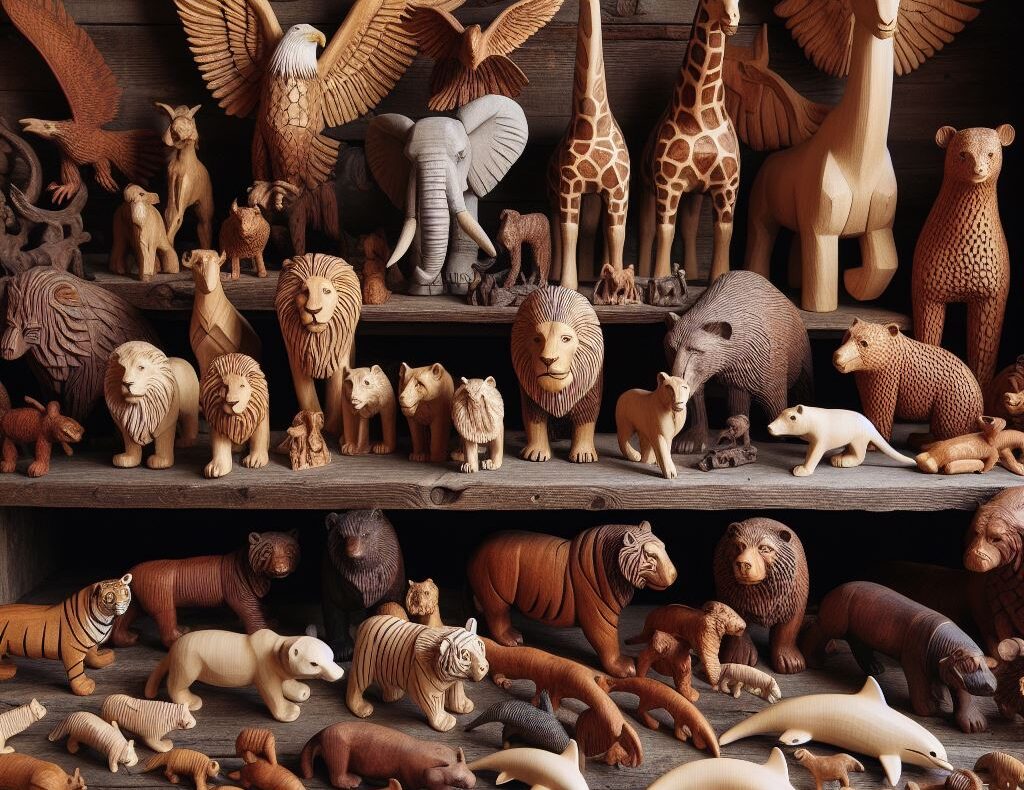
The Enduring Imprint of the Natural World on the Human Psyche
Throughout human history, our relationship with the natural world has shaped our evolution, not only in terms of physical adaptation but also in the realm of the psyche. One of the most profound ways in which this connection manifests is through our relationship with and identification with animals. These creatures, both real and mythological, have long been woven into the fabric of our dreams, stories, and unconscious minds, serving as powerful archetypes that reflect our deepest fears, desires, and aspirations.
The Farm Fox Experiment: Unveiling the Evolutionary Roots of Archetypes
The remarkable Farm Fox Experiment conducted by Russian scientists not only demonstrated the astonishing speed of evolutionary change through selective breeding but also shed light on the deep-seated mechanisms that shape our perception of the world around us. The rapid emergence of tame, friendly foxes with neotenous features suggests that our ability to “read” the genetic underpinnings of behavior through physical cues may be more profound than previously thought.
This intuitive understanding of the link between genes and behavior is not a conscious process, but rather a function of the subcortical regions of our brain that operate below the level of awareness. These ancient structures, shaped by millions of years of evolution, allow us to navigate the world in a way that feels instinctive and natural, even if we can’t always articulate the reasons behind our perceptions.
The Role of Archetypes in the Unconscious Mind
The Farm Fox Experiment provides a powerful illustration of how these deep-encoded messages manifest in our perception of animals. The neotenous features that emerged in the tame foxes, such as floppy ears and shortened snouts, tap into a primal sense of cuteness and appeal that we often exaggerate in animated characters like Baby Yoda or the Na’vi creatures in Avatar. These archetypes serve as unconscious or semi-conscious symbols that guide our interactions with the world around us, both inner and external.
In this way, the experiment sheds light on the evolutionary roots of archetypes and their role in shaping our understanding of the world. By allowing us to “see” the genes related to aggression and friendliness through the phenotypes associated with those traits, archetypes serve as a bridge between our conscious experience and the deeper, more instinctive layers of our psyche.
The Interplay of Archetypes and Culture
While the Farm Fox Experiment highlights the biological basis of archetypes, it is important to recognize that these symbols are also shaped by cultural factors. The specific meanings and associations attached to different animals, for example, can vary widely across societies and traditions, as in the case of Ganesha, the elephant-headed god in Indian mythology.
This interplay between the evolutionary and the cultural underscores the complex nature of archetypes and their role in our lives. By understanding these symbols as the product of both our deep evolutionary history and our social context, we can gain a richer appreciation of how they influence our perception of the world and our place within it.
Ultimately, the Farm Fox Experiment serves as a powerful reminder of the profound ways in which our evolutionary past continues to shape our present experience, even if we are not always consciously aware of its influence. By shedding light on the biological roots of archetypes and their role in the unconscious mind, the experiment invites us to explore the deeper layers of our own psyche and to recognize the complex interplay of nature and nurture that defines our existence.
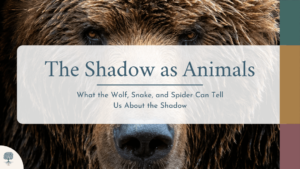
1. The Lion: King of the Jungle, Ruler of the Psyche
The Symbolism of the Lion
The lion, often referred to as the “king of the jungle,” has long been a symbol of strength, courage, and nobility. Its majestic appearance and powerful presence have captured the imagination of humans across cultures and throughout history. In many traditions, the lion is associated with the sun, representing vitality, warmth, and the life-giving force of nature.
The Lion Across the Ages
In the prehistoric era, cave paintings depicting lions suggest that early humans both revered and feared these magnificent creatures. As civilizations developed, the lion became a prominent symbol in many cultures. In ancient Egypt, the sphinx, a mythical creature with the body of a lion and the head of a human, was believed to be a guardian of sacred places and a symbol of divine power.
During the medieval period, the lion was a common heraldic symbol, representing bravery, nobility, and leadership. In Christian iconography, the lion was often depicted as a symbol of Christ, embodying both strength and sacrifice. The lion also played a significant role in various mythologies, such as the Nemean lion in Greek mythology and the lion-headed goddess Sekhmet in Egyptian mythology.
The Lion in Modern Context
In modern times, the lion remains a powerful symbol, often used in political, sports, and advertising contexts. The lion is a common emblem for nations, such as England and Singapore, representing strength, courage, and national pride. In sports, teams often adopt the lion as their mascot, embodying the qualities of determination, teamwork, and fierce competitiveness.
In advertising, the lion is frequently used to convey a sense of superiority, quality, and dominance. Brands such as Peugeot and MGM have incorporated the lion into their logos, leveraging the animal’s symbolic power to create a strong and memorable brand identity.
The Lion and the Psyche
From a Jungian perspective, the lion represents various elements of the psyche and archetypes. The lion is often associated with the archetype of the ruler or king, embodying qualities such as leadership, authority, and sovereignty. It can also represent the archetype of the hero, symbolizing courage, strength, and the ability to overcome challenges.
In dreams, the lion can appear as a symbol of one’s relationship with power, both inner and outer. A person who is in touch with their own sense of power and assertiveness might dream of being or riding a lion, indicating a healthy integration of these qualities. Conversely, a person who feels disconnected from their own strength or who fears their own anger might dream of encountering a sleeping lion in a basement, suggesting a suppressed or unacknowledged aspect of the self.
The Lion as a Shadow Symbol
As a shadow symbol, the lion might appear in dreams as a threatening or overwhelming force, representing repressed anger, aggression, or a fear of losing control. For example, a person who is afraid of the growing influence of fascism or authoritarianism in the world might dream of hearing a lion’s roar in the distance, symbolizing the looming threat of oppressive power.
Integrating the Lion Archetype
Jungian and art therapists can use various exercises to help individuals explore and integrate their relationship with the lion archetype. One such exercise might involve guided visualization, in which the individual imagines encountering a lion in a safe space and engages in a dialogue with the creature, exploring its qualities and the messages it may have for the individual’s personal growth and development.
Another approach could be through creative expression, such as drawing, painting, or sculpting a lion, allowing the individual to give form to their inner experience of the archetype and to explore its meaning in a tangible way.
Experts and Anthropologists
Several Jungian analysts and anthropologists have explored the symbolism of the lion in depth. Erich Neumann, a prominent Jungian analyst, discussed the lion as a symbol of the “Great Mother” archetype in his book “The Great Mother.” Anthropologist Joseph Campbell, in his work “The Hero with a Thousand Faces,” examined the lion as a common motif in hero myths across cultures.
Other notable figures who have contributed to our understanding of the lion as a psychological and cultural symbol include Jungian analyst Marie-Louise von Franz, who explored the lion’s role in fairy tales and mythology, and anthropologist Desmond Morris, who studied the lion’s significance in human culture and art.
By delving into the rich symbolism of the lion and its enduring presence in the human psyche, we can gain valuable insights into our own inner world and the archetypes that shape our experiences and beliefs.
The Lion in Secret Societies and Rituals
The lion has long been associated with various secret societies and ritual practices, often serving as a symbol of power, initiation, and spiritual transformation. In his work “The Ritual Process,” anthropologist Victor Turner explored the concept of liminality, a state of transition or threshold, and noted that the lion often appears as a symbol in liminal spaces and rituals.
In some African initiation rites, young men are symbolically “swallowed” by a lion, representing their death as children and their rebirth as adults. This powerful imagery echoes the lion’s association with the sun, which is believed to be swallowed by the night and reborn each morning.
In Freemasonry, the lion is a prominent symbol, often depicted as one of the two pillars (Jachin and Boaz) that guard the entrance to the temple. The lion is also associated with the astrological sign of Leo, which is considered a significant symbol in Masonic traditions.
Mircea Eliade, a renowned historian of religion, explored the lion’s symbolism in various spiritual and esoteric traditions. In his book “The Sacred and the Profane,” Eliade discussed the lion’s role as a guardian of sacred spaces and a symbol of the threshold between the mundane and the divine.
The lion’s association with secret societies and rituals underscores its enduring power as a symbol of transformation, initiation, and the journey between realms. By understanding these esoteric connections, we can gain a deeper appreciation for the lion’s multi-faceted significance in the human psyche and cultural imagination.
2. The Serpent: Symbol of Transformation and Duality

The Symbolism of the Serpent
The serpent is a complex and often paradoxical symbol, representing both wisdom and deception, renewal and destruction. Its ability to shed its skin has made it a powerful emblem of transformation, rebirth, and the cyclical nature of life. In many cultures, the serpent is associated with the earth, fertility, and the feminine principle, while also being linked to the underworld and the realm of the dead.
The Serpent Across the Ages
In the prehistoric era, serpent symbolism can be found in the form of stone carvings and cave paintings, suggesting its significance in early human spirituality. In ancient Egypt, the serpent was revered as a symbol of royalty and divine power, with the uraeus, a rearing cobra, adorning the crowns of pharaohs.
In the classical world, the serpent played a prominent role in Greek and Roman mythology. The caduceus, a staff entwined by two serpents, was associated with Hermes, the messenger god, and later became a symbol of medicine and healing. In the Judeo-Christian tradition, the serpent is often portrayed as a tempter and a symbol of evil, as exemplified by the story of Adam and Eve in the Garden of Eden.
The Serpent in Modern Context
In modern times, the serpent continues to be a potent symbol, often used in literature, art, and popular culture. In the field of medicine, the caduceus remains a widely recognized emblem, representing the healing arts and the delicate balance between life and death.
In contemporary spiritual and esoteric traditions, the serpent is often associated with the concept of the kundalini, a primal energy believed to lie dormant at the base of the spine. The awakening and rise of the kundalini is seen as a transformative process, leading to heightened consciousness and spiritual enlightenment.
The Serpent and the Psyche
From a Jungian perspective, the serpent represents the shadow aspect of the psyche, the parts of ourselves that we repress or deny. Its shedding of skin symbolizes the process of individuation, the integration of the conscious and unconscious aspects of the self.
In dreams, the serpent can appear as both a positive and negative symbol. It may represent hidden knowledge, intuition, and the potential for personal growth, but it can also signify repressed fears, temptations, and the danger of being consumed by one’s own unconscious impulses.
The Serpent as a Shadow Symbol
As a shadow symbol, the serpent may manifest in dreams as a threatening or seductive presence, luring the dreamer into confronting their deepest fears and desires. A person struggling with addiction, for example, might dream of a serpent offering them their substance of choice, symbolizing the allure and danger of their unhealthy habits.
The Serpent in Secret Societies and Rituals
The serpent has long been associated with various secret societies and occult traditions, often serving as a symbol of hidden knowledge, initiation, and the path to enlightenment. In the ancient mystery schools of Egypt and Greece, the serpent was a central motif in initiation rites, representing the death of the old self and the birth of the new.
In the Gnostic tradition, the serpent in the Garden of Eden was seen as a liberator, offering knowledge and freedom from the tyranny of the demiurge, the false creator god. This interpretation of the serpent as a positive symbol of gnosis and spiritual awakening has influenced many esoteric and occult traditions throughout history.
Integrating the Serpent Archetype
To work with the serpent archetype, individuals can engage in practices such as dream interpretation, journaling, and creative expression. By exploring the serpent’s appearance in their dreams and imaginative life, they can gain insight into the shadow aspects of their psyche and work towards integration and wholeness.
Engaging with serpent symbolism through art, such as drawing mandalas or creating serpent-inspired poetry, can also be a powerful way to connect with this archetype and explore its transformative potential.
Experts and Anthropologists
The work of anthropologist Jeremy Narby, particularly his book “The Cosmic Serpent,” explores the significance of serpent symbolism in indigenous Amazonian traditions and its relationship to modern scientific knowledge.
Jungian analyst Ross Woodman has written extensively on the serpent as a symbol of transformation in literature and mythology, drawing on the works of poets such as William Blake and Milton.
Anthropologist and shamanic practitioner Michael Harner has studied the role of the serpent in shamanic traditions worldwide, emphasizing its connection to healing and spiritual transformation.
By engaging with the serpent archetype and exploring its multi-faceted symbolism, we can tap into the transformative power of the unconscious and deepen our understanding of ourselves and the world around us.
3. The Bear: Guardian of the Unconscious
The Symbolism of the Bear
The bear is a powerful and complex symbol, representing both nurturing and aggression, introspection and leadership. As a creature that hibernates during the winter months, the bear is often associated with the cycles of death and rebirth, the journey into the underworld of the psyche, and the return to consciousness with renewed strength and wisdom.
The Bear Across the Ages
In prehistoric times, the bear was revered as a sacred animal, with bear cults and rituals evident in many early cultures. Cave paintings and carvings depicting bears suggest their importance in shamanic practices and spiritual beliefs.
In many indigenous traditions, such as those of the Native Americans and the Ainu people of Japan, the bear is seen as a sacred ancestor, a guardian spirit, and a source of wisdom and healing. In Norse mythology, the bear is associated with the god Odin and the warrior spirit, symbolizing courage, ferocity, and the willingness to face one’s fears.
The Bear in Modern Context
In modern times, the bear remains a potent symbol, often used in literature, art, and popular culture. The teddy bear, a beloved children’s toy, represents the nurturing and comforting aspects of the bear archetype.
In contemporary wilderness conservation efforts, the bear has become an emblem of the need to protect and preserve natural habitats. Organizations such as the World Wildlife Fund use the image of the panda bear to raise awareness about endangered species and the importance of ecological stewardship.
The Bear and the Psyche
From a Jungian perspective, the bear represents the unconscious mind, the instinctual wisdom that lies beneath the surface of our conscious awareness. Its hibernation symbolizes the process of introversion, the turning inward to explore the depths of the psyche and to confront the shadows that reside there.
In dreams, the bear can appear as a guide or protector, leading the dreamer through the challenges and transformations of the individuation process. It may also represent the need for self-care, the importance of rest and renewal, and the cyclical nature of growth and change.
The Bear as a Shadow Symbol
As a shadow symbol, the bear may manifest in dreams as a threatening or devouring presence, symbolizing the fear of being overwhelmed by one’s own unconscious impulses or the destructive potential of unintegrated aspects of the self.
A person who struggles with anger or aggression, for example, might dream of a raging bear, reflecting the need to confront and integrate these shadow qualities in a healthy and constructive way.
The Bear in Secret Societies and Rituals
The bear has been associated with various warrior societies and shamanic traditions throughout history. In some Native American cultures, the bear is seen as a powerful spirit guide, and bear clans are responsible for upholding sacred teachings and performing healing rituals.
In the Midewiwin, or Grand Medicine Society, of the Ojibwe people, the bear is a central figure in initiation rites and sacred storytelling. Participants in these rituals often wear bear masks or bear skin robes, symbolizing their connection to the power and wisdom of the bear spirit.
Integrating the Bear Archetype
To work with the bear archetype, individuals can engage in practices such as meditation, dream work, and nature-based rituals. By connecting with the bear through visualization and shamanic journeying, they can access the deep wisdom and healing power of the unconscious mind.
Spending time in nature, particularly in bear habitats, can also be a powerful way to connect with this archetype and to cultivate a sense of grounding, resilience, and inner strength.
Experts and Anthropologists
Anthropologist and shamanic practitioner Martin Prechtel has written extensively on the significance of the bear in indigenous Guatemalan traditions, emphasizing its role as a teacher and guide in the process of spiritual transformation.
Jungian analyst and ecopsychologist Bill Plotkin, in his book “Soulcraft,” explores the bear as a symbol of the descent into the underworld of the psyche and the importance of this journey for personal growth and development.
Ethnographer and wilderness guide Steven Foster has studied the bear’s significance in Native American traditions, particularly in relation to shamanic healing practices and the cultivation of spiritual power.
By engaging with the bear archetype and exploring its rich symbolism, we can connect with the deep wisdom of the unconscious mind and cultivate the strength, resilience, and introspection needed to navigate the challenges of life.
4. The Eagle: Messenger of the Gods
The Symbolism of the Eagle
The eagle is a majestic and powerful symbol, representing spiritual aspiration, freedom, and the connection between heaven and earth. With its keen vision and ability to soar to great heights, the eagle is often associated with clarity, perspective, and the ability to rise above the mundane world to access higher truths and spiritual insights.
The Eagle Across the Ages
In prehistoric times, eagle symbolism can be found in the form of cave paintings and rock art, suggesting its significance in early human spirituality. In ancient Egypt, the eagle was associated with the god Horus, representing divine kingship, protection, and the victory of light over darkness.
In many indigenous traditions, such as those of the Native Americans and the Aztecs, the eagle is seen as a sacred messenger, carrying prayers and offerings to the spirit world. In Greek and Roman mythology, the eagle is associated with Zeus/Jupiter, the king of the gods, symbolizing power, authority, and divine favor.
The Eagle in Modern Context
In modern times, the eagle remains a potent symbol, often used in national emblems, heraldry, and military insignia. The bald eagle, for example, is the national bird of the United States, representing freedom, strength, and the American spirit.
In contemporary nature conservation efforts, the eagle has become an emblem of the need to protect and preserve wildlife and natural habitats. Organizations such as the National Audubon Society use the image of the eagle to raise awareness about the importance of protecting endangered species and their ecosystems.
The Eagle and the Psyche
From a Jungian perspective, the eagle represents the high ego, the part of the psyche that seeks to rise above the limitations of the personal self and connect with the transpersonal realm of the spirit. Its flight symbolizes the journey of individuation, the process of self-realization and the integration of the conscious and unconscious aspects of the self.
In dreams, the eagle can appear as a guide or messenger, bringing insights and revelations from the higher realms of the psyche. It may also represent the need for spiritual vision, the ability to see beyond the surface of things and to access deeper truths and meanings.
The Eagle as a Shadow Symbol
As a shadow symbol, the eagle may manifest in dreams as a threatening or oppressive presence, symbolizing the danger of inflation or grandiosity. A person who is overly identified with their ego or who seeks power and control at the expense of others might dream of an eagle attacking or dominating weaker creatures.
The Eagle in Secret Societies and Rituals
The eagle has been associated with various spiritual and initiatory traditions throughout history. In many Native American cultures, eagle feathers are used in sacred ceremonies and rituals, representing the connection between the earthly and spiritual realms.
In the Mayan tradition, the eagle is a central figure in the creation myth, representing the force of divine creation and the ascent of consciousness. In the alchemical tradition, the eagle is a symbol of the purified soul, the result of the spiritual transformation and the union of opposites.
Integrating the Eagle Archetype
To work with the eagle archetype, individuals can engage in practices such as meditation, visualization, and shamanic journeying. By connecting with the eagle through guided imagery and dream work, they can access higher states of consciousness and gain clarity and perspective on their life journey.
Spending time in nature, particularly in high places such as mountains or cliffs, can also be a powerful way to connect with the eagle archetype and to cultivate a sense of spiritual vision and freedom.
Experts and Anthropologists
Anthropologist and shamanic practitioner Michael Harner has written extensively on the significance of the eagle in indigenous traditions worldwide, emphasizing its role as a messenger between the human and spirit worlds.
Jungian analyst and author Robert Johnson, in his book “He,” explores the eagle as a symbol of the high ego and the importance of integrating this archetype for psychological and spiritual growth.
Mythologist and author Joseph Campbell has studied the eagle’s significance in world mythology, particularly in relation to the hero’s journey and the quest for spiritual enlightenment.
By engaging with the eagle archetype and exploring its rich symbolism, we can connect with the transpersonal realms of the psyche and cultivate the spiritual vision, clarity, and freedom needed to soar to new heights of self-realization and understanding.
5. The Wolf: Shadow and Instinct
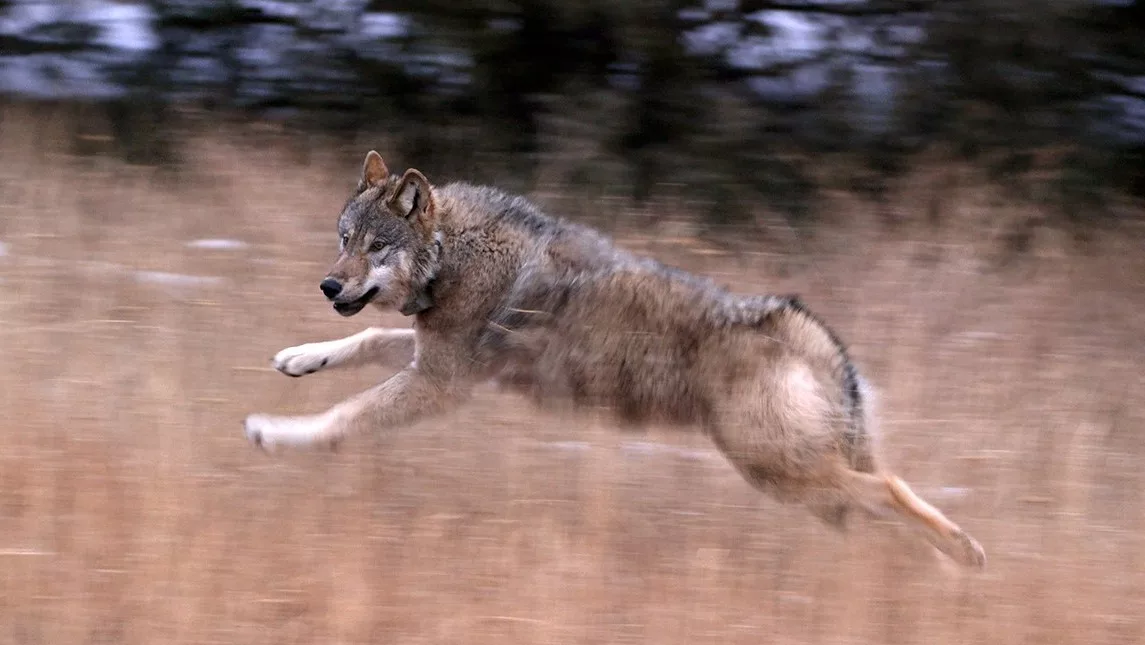
The Symbolism of the Wolf
The wolf is a complex and often misunderstood symbol, representing both the untamed wilderness of the psyche and the social bonds of the pack. As a creature of the night, the wolf is often associated with the shadow, the hidden aspects of the self that we fear or reject. Yet, the wolf is also a symbol of loyalty, cooperation, and the importance of finding one’s place within the larger community.
The Wolf Across the Ages
In prehistoric times, wolf symbolism can be found in the form of cave paintings and carved figurines, suggesting its significance in early human cultures. In many indigenous traditions, such as those of the Native Americans and the Mongolians, the wolf is seen as a sacred teacher, a guide to the spirit world, and a symbol of courage and perseverance.
In Norse mythology, the wolves Fenrir and Skoll are associated with the destruction of the old order and the birth of a new world, symbolizing the transformative power of the unconscious and the cyclical nature of creation and destruction.
The Wolf in Modern Context
In modern times, the wolf remains a potent symbol, often used in literature, art, and popular culture. The “lone wolf” archetype, for example, represents the individualist who follows their own path, often at the cost of social acceptance or conformity.
In contemporary wildlife conservation efforts, the wolf has become an emblem of the need to protect and preserve natural habitats and the delicate balance of ecosystems. Organizations such as the World Wildlife Fund use the image of the wolf to raise awareness about the importance of preserving biodiversity and the interconnectedness of all living things.
The Wolf and the Psyche
From a Jungian perspective, the wolf represents the instinctual and primal aspects of the psyche, the raw energy and desires that we often suppress or deny in order to fit into society’s expectations. Its pack mentality symbolizes the need for social connection and belonging, the importance of finding one’s tribe and working together towards a common goal.
In dreams, the wolf can appear as both a threatening and a protective presence, reflecting the dual nature of the shadow. It may represent the fear of being devoured by one’s own unconscious impulses, but it can also serve as a guide, leading the dreamer to confront and integrate the disowned parts of the self.
The Wolf as a Shadow Symbol
As a shadow symbol, the wolf may manifest in dreams as a predatory or menacing presence, symbolizing the fear of being consumed by one’s own darkness or the destructive potential of unrestrained instincts.
A person who struggles with repressed anger or aggression, for example, might dream of a wolf stalking or attacking them, reflecting the need to confront and integrate these shadow qualities in a healthy and constructive way.
The Wolf in Secret Societies and Rituals
The wolf has been associated with various warrior societies and shamanic traditions throughout history. In some Native American cultures, wolf clans are responsible for upholding sacred teachings and performing rituals related to hunting, warfare, and spiritual protection.
In the Norse tradition, the berserkers were a class of elite warriors who wore wolf skins and channeled the ferocity and strength of the wolf in battle, channeling the ferocity and power of the wolf spirit.
Integrating the Wolf Archetype
To work with the wolf archetype, individuals can engage in practices such as drumming, chanting, and ritual dance. By connecting with the wolf through primal sound and movement, they can access the instinctual energy of the psyche and develop a deeper understanding of their own wild nature.
Spending time in nature, particularly in wolf habitats or places of wilderness, can also be a powerful way to connect with the wolf archetype. By immersing oneself in the raw beauty and power of the natural world, one can cultivate a sense of belonging and kinship with the more-than-human realms.
Engaging in group activities that promote cooperation, loyalty, and a sense of pack cohesion, such as team sports, community service, or group therapy, can also be a way to integrate the wolf archetype and develop a healthy sense of social connection and support.
Experts and Anthropologists
Anthropologist and author Clarissa Pinkola Estés, in her book “Women Who Run with the Wolves,” explores the wolf as a symbol of the wild feminine, the untamed and instinctual aspects of the female psyche. Through myths, fairy tales, and Jungian analysis, Estés examines the ways in which women can reclaim their wild nature and embrace their own inner wolf.
Wildlife biologist and author L. David Mech, in his book “The Wolf: Ecology and Behavior of an Endangered Species,” provides a comprehensive scientific study of wolf behavior and social dynamics, highlighting the complex and sophisticated nature of wolf society and the important role that wolves play in maintaining the health and balance of ecosystems.
Mythologist and author Jospeh Campbell, in his book “The Hero with a Thousand Faces,” explores the wolf as a symbol of the hero’s journey, the archetypal quest for self-discovery and transformation. Campbell examines the ways in which the wolf appears in myths and stories around the world, representing the challenges and trials that the hero must face in order to achieve spiritual enlightenment and self-mastery.
By engaging with the wolf archetype and exploring its rich symbolism, we can connect with the primal and instinctual aspects of the psyche, and cultivate a deeper sense of belonging, purpose, and connection with the wild and untamed parts of ourselves and the world around us.
6. The Deer: Grace and Regeneration
The Symbolism of the Deer
The deer is a gentle and graceful symbol, representing sensitivity, intuition, and the regenerative power of nature. As a creature of the forest, the deer is often associated with the mysteries of the unconscious, the ability to navigate through the shadows and find wisdom in the depths of the psyche.
The Deer Across the Ages
In prehistoric times, deer symbolism can be found in the form of cave paintings and carved figurines, suggesting its significance in early human cultures. In many indigenous traditions, such as those of the Celts and the Native Americans, the deer is seen as a sacred guide, a messenger from the spirit world, and a symbol of gentleness, grace, and the power of regeneration.
In Greek mythology, the deer is associated with Artemis, the goddess of the hunt and the moon, symbolizing the feminine principle, the cycles of nature, and the importance of intuition and instinct.
The Deer in Modern Context
In modern times, the deer remains a potent symbol, often used in literature, art, and popular culture. The “deer in the headlights” metaphor, for example, represents the feeling of being caught off guard or paralyzed by fear or uncertainty.
In contemporary nature conservation efforts, the deer has become an emblem of the need to protect and preserve natural habitats and the delicate balance of ecosystems. Organizations such as the Wildlife Conservation Society use the image of the deer to raise awareness about the importance of preserving biodiversity and the interconnectedness of all living things.
The Deer and the Psyche
From a Jungian perspective, the deer represents the gentle and intuitive aspects of the psyche, the ability to find grace and beauty in the midst of life’s challenges. Its sensitivity symbolizes the need for self-care and the importance of listening to one’s inner voice and trusting one’s instincts.
In dreams, the deer can appear as a guide or messenger, leading the dreamer to new insights and revelations. It may also represent the need for gentleness and compassion, both towards oneself and others.
The Deer as a Shadow Symbol
As a shadow symbol, the deer may manifest in dreams as a wounded or hunted creature, symbolizing the vulnerability and fragility of the psyche. A person who struggles with feelings of inadequacy or self-doubt, for example, might dream of a deer being chased or attacked, reflecting the need for self-acceptance and inner strength.
The Deer in Secret Societies and Rituals
The deer has been associated with various spiritual and shamanic traditions throughout history. In many Native American cultures, deer medicine is used in healing rituals and ceremonies, representing the power of gentleness, sensitivity, and the ability to find inner peace.
In the Celtic tradition, the deer is a sacred symbol of the forest, associated with the Horned God and the mysteries of the natural world. In some Wiccan and Pagan traditions, the deer is invoked as a spirit guide and a symbol of the sacred feminine.
Integrating the Deer Archetype
To work with the deer archetype, individuals can engage in practices such as meditation, nature walks, and creative expression. By connecting with the deer through visualization and dream work, they can access the gentle and intuitive aspects of the psyche and cultivate a sense of inner peace and self-acceptance.
Spending time in nature, particularly in forests or other natural habitats, can also be a powerful way to connect with the deer archetype and to cultivate a sense of connection with the natural world.
Experts and Anthropologists
Anthropologist and author Jean Shinoda Bolen, in her book “Goddesses in Everywoman,” explores the deer as a symbol of the Greek goddess Artemis and the importance of cultivating the feminine principle of intuition and sensitivity.
Ecologist and author David Abram, in his book “The Spell of the Sensuous,” examines the significance of deer in indigenous cultures and the ways in which human perception and cognition are shaped by our relationship with the natural world.
Psychologist and author Clarissa Pinkola Estés, in her book “Women Who Run with the Wolves,” explores the deer as a symbol of the wild and instinctual aspects of the feminine psyche and the importance of reclaiming these qualities for psychological and spiritual health.
By engaging with the deer archetype and exploring its rich symbolism, we can connect with the gentle and intuitive aspects of the psyche and cultivate a deeper sense of connection with the natural world and the sacred feminine.
7. The Elephant: Memory and Wisdom
The Symbolism of the Elephant
The elephant is a powerful and revered symbol, representing strength, loyalty, and the wisdom of the ages. With its impressive size and gentle demeanor, the elephant is often associated with the qualities of patience, compassion, and the ability to navigate through life’s challenges with grace and dignity.
The Elephant Across the Ages
In prehistoric times, elephant symbolism can be found in the form of cave paintings and carved figurines, suggesting its significance in early human cultures. In many ancient traditions, such as those of India and Africa, the elephant is seen as a sacred being, a symbol of royalty, and a manifestation of divine power and wisdom.
In Hindu mythology, the elephant-headed god Ganesha is revered as the remover of obstacles and the patron of arts and sciences, symbolizing the importance of intelligence, creativity, and the ability to overcome challenges.
The Elephant in Modern Context
In modern times, the elephant remains a potent symbol, often used in literature, art, and popular culture. The phrase “an elephant never forgets,” for example, represents the idea of long-term memory and the importance of learning from past experiences.
In contemporary wildlife conservation efforts, the elephant has become an emblem of the need to protect and preserve endangered species and their habitats. Organizations such as the World Wildlife Fund use the image of the elephant to raise awareness about the importance of preserving biodiversity and the interconnectedness of all living things.
The Elephant and the Psyche
From a Jungian perspective, the elephant represents the wise and compassionate aspects of the psyche, the ability to draw upon the depths of memory and experience to navigate life’s challenges. Its strength and resilience symbolize the importance of perseverance and the ability to overcome obstacles with patience and determination.
In dreams, the elephant can appear as a guide or protector, offering wisdom and support in times of need. It may also represent the need for grounding and stability, the importance of staying connected to one’s roots and values.
The Elephant as a Shadow Symbol
As a shadow symbol, the elephant may manifest in dreams as a heavy or burdensome presence, symbolizing the weight of past traumas or unresolved emotions. A person who struggles with feelings of being overwhelmed or stuck, for example, might dream of an elephant blocking their path or weighing them down.
The Elephant in Secret Societies and Rituals
The elephant has been associated with various spiritual and religious traditions throughout history. In some African cultures, elephant tusks are used in sacred rituals and ceremonies, representing the power and wisdom of the ancestors.
In the Vedic tradition of India, elephants are associated with the cardinal directions and the elements, symbolizing the balance and harmony of the universe. In some Buddhist traditions, the white elephant is a symbol of the Buddha’s birth and the qualities of purity, peace, and enlightenment.
Integrating the Elephant Archetype
To work with the elephant archetype, individuals can engage in practices such as journaling, dream work, and mindfulness meditation. By connecting with the elephant through visualization and self-reflection, they can access the wise and compassionate aspects of the psyche and cultivate a sense of inner strength and resilience.
Engaging in activities that promote memory and learning, such as reading, puzzles, or creative pursuits, can also be a powerful way to connect with the elephant archetype and to cultivate the qualities of wisdom and intelligence.
Experts and Anthropologists
Anthropologist and author Barbara Smuts, in her book “Sex and Friendship in Baboons,” explores the complex social relationships and emotional lives of elephants, highlighting their capacity for empathy, loyalty, and long-term bonding.
Psychologist and author Gay Bradshaw, in her book “Elephants on the Edge,” examines the psychological and emotional impact of trauma on elephant populations and the ways in which human-elephant conflicts can be resolved through compassion and understanding.
Environmental philosopher and author Derrick Jensen, in his book “The Culture of Make Believe,” explores the elephant as a symbol of the natural world and the ways in which human exploitation and domination of nature have led to ecological and social collapse.
By engaging with the elephant archetype and exploring its rich symbolism, we can connect with the wise and compassionate aspects of the psyche and cultivate a deeper sense of connection with the natural world and the wisdom of the ages.
8. The Raven: Trickster and Shapeshifter
The Symbolism of the Raven
The raven is a complex and enigmatic symbol, representing both creation and destruction, wisdom and deception. As a creature of the air, the raven is often associated with the realm of thought and intellect, the ability to see beyond the veil of the material world and access hidden knowledge and secrets.
The Raven Across the Ages
In prehistoric times, raven symbolism can be found in the form of cave paintings and carved figurines, suggesting its significance in early human cultures. In many indigenous traditions, such as those of the Native Americans and the Inuit, the raven is seen as a powerful creator god, a trickster spirit, and a guide to the mysteries of life and death.
In Norse mythology, the ravens Huginn and Muninn are associated with the god Odin, symbolizing thought and memory, the ability to gather knowledge from all corners of the world.
The Raven in Modern Context
In modern times, the raven remains a potent symbol, often used in literature, art, and popular culture. The phrase “a conspiracy of ravens,” for example, represents the idea of a group of individuals working together towards a common goal, often in secret or with ulterior motives.
In contemporary nature conservation efforts, the raven has become an emblem of the need to protect and preserve native species and their habitats. Organizations such as the Audubon Society use the image of the raven to raise awareness about the importance of preserving biodiversity and the interconnectedness of all living things.
The Raven and the Psyche
From a Jungian perspective, the raven represents the trickster archetype, the ability to navigate between the realms of the conscious and the unconscious, the known and the unknown. Its shape-shifting nature symbolizes the fluidity and adaptability of the psyche, the ability to transform and evolve in response to life’s challenges.
In dreams, the raven can appear as a messenger or guide, offering insights and revelations from the depths of the unconscious. It may also represent the need for creativity and innovation, the ability to think outside the box and find new solutions to old problems.
The Raven as a Shadow Symbol
As a shadow symbol, the raven may manifest in dreams as a dark or malevolent presence, symbolizing the deceptive or manipulative aspects of the psyche. A person who struggles with issues of trust or honesty, for example, might dream of a raven stealing or hoarding shiny objects, reflecting the need for self-awareness and integrity.
The Raven in Secret Societies and Rituals
The raven has been associated with various spiritual and occult traditions throughout history. In some Native American cultures, raven feathers are used in sacred rituals and ceremonies, representing the power of creation and transformation.
In the alchemical tradition, the raven is a symbol of the nigredo, the first stage of the alchemical process, representing the dissolution of the ego and the confrontation with the shadow. In some Wiccan and Pagan traditions, the raven is invoked as a spirit guide and a symbol of the dark goddess.
Integrating the Raven Archetype
To work with the raven archetype, individuals can engage in practices such as journaling, dream interpretation, and creative expression. By connecting with the raven through visualization and imaginative play, they can access the trickster energy of the psyche and cultivate a sense of creativity, curiosity, and adaptability.
Engaging in activities that promote mental flexibility and problem-solving, such as puzzles, riddles, or improvisation, can also be a powerful way to connect with the raven archetype and to cultivate the qualities of wit and ingenuity.
Experts and Anthropologists
Anthropologist and author Claude Lévi-Strauss, in his book “The Savage Mind,” explores the significance of the raven in indigenous mythologies and the ways in which the trickster archetype reflects the fundamental structures of human thought and culture.
Jungian analyst and author Marie-Louise von Franz, in her book “The Way of the Dream,” examines the role of the raven in fairy tales and dreams, highlighting its significance as a symbol of transformation and the integration of the shadow.
Mythologist and author Lewis Hyde, in his book “Trickster Makes This World,” explores the raven as a cross-cultural symbol of the trickster archetype, examining its role in the creation and disruption of social norms and the evolution of human consciousness.
By engaging with the raven archetype and exploring its rich symbolism, we can connect with the trickster energy of the psyche and cultivate a deeper sense of creativity, adaptability, and the ability to navigate the mysteries of life with wit and wisdom.
9. The Whale: Depths of the Psyche
The Symbolism of the Whale
The whale is a majestic and mysterious symbol, representing the depths of the unconscious mind and the journey of self-discovery. As the largest creature in the ocean, the whale is often associated with the qualities of wisdom, intuition, and the ability to navigate through the vast and uncharted waters of the psyche.
The Whale Across the Ages
In prehistoric times, whale symbolism can be found in the form of cave paintings and carved figurines, suggesting its significance in early human cultures. In many indigenous traditions, such as those of the Inuit and the Maori, the whale is seen as a sacred being, a guide to the spirit world, and a symbol of the interconnectedness of all life.
In biblical mythology, the story of Jonah and the whale represents the journey of the soul, the descent into the depths of the unconscious, and the eventual emergence into the light of self-awareness.
The Whale in Modern Context
In modern times, the whale remains a potent symbol, often used in literature, art, and popular culture. The phrase “a whale of a tale,” for example, represents the idea of a story that is larger than life, full of wonder and mystery.
In contemporary marine conservation efforts, the whale has become an emblem of the need to protect and preserve the world’s oceans and the creatures that inhabit them. Organizations such as Greenpeace use the image of the whale to raise awareness about the dangers of commercial whaling, pollution, and climate change.
The Whale and the Psyche
From a Jungian perspective, the whale represents the depths of the collective unconscious, the realm of archetypes and primordial images that shape our psyche and our experience of the world. Its immense size and power symbolize the vastness and complexity of the human mind, the untapped potential that lies beneath the surface of our conscious awareness.
In dreams, the whale can appear as a guide or guardian, leading us through the dark and turbulent waters of the unconscious, helping us to confront our deepest fears and desires. It may also represent the need for emotional and spiritual growth, the importance of diving deep within ourselves to find meaning and purpose.
The Whale as a Shadow Symbol
As a shadow symbol, the whale may manifest in dreams as a threatening or overwhelming presence, symbolizing the fear of being swallowed up by the unconscious, of losing oneself in the depths of the psyche. A person who struggles with issues of control or surrender, for example, might dream of being pursued or engulfed by a whale, reflecting the need for trust and letting go.
The Whale in Secret Societies and Rituals
The whale has been associated with various spiritual and mystical traditions throughout history. In some Native American cultures, whale bones and teeth are used in sacred rituals and ceremonies, representing the power and wisdom of the ocean.
In the Inuit tradition, the whale is seen as a gift from the sea goddess Sedna, a symbol of abundance and the cyclical nature of life and death. In some New Age and contemporary spiritual practices, the whale is invoked as a totem animal, a guide for inner journeys and shamanic explorations.
Integrating the Whale Archetype
To work with the whale archetype, individuals can engage in practices such as meditation, dream incubation, and deep imagining. By connecting with the whale through visualization and inner dialogue, they can access the depths of the unconscious and tap into the wisdom and intuition that reside there.



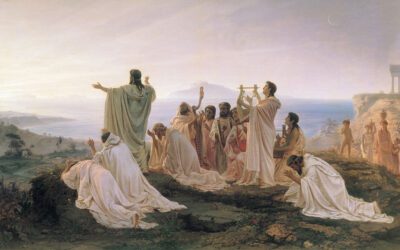
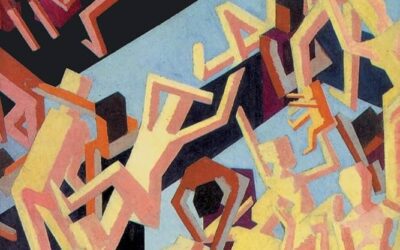
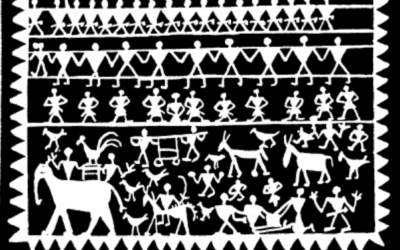

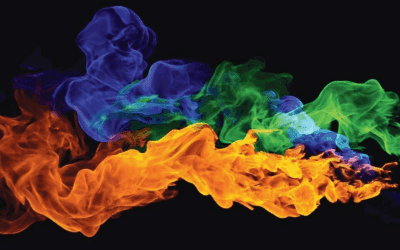





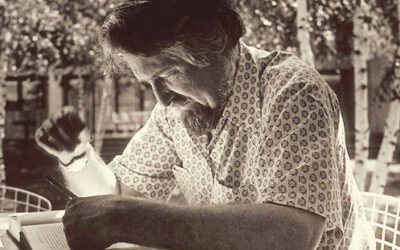



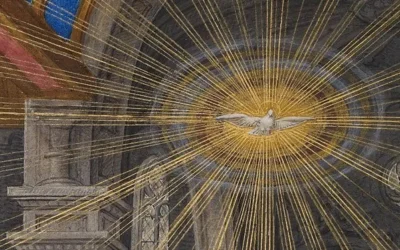








0 Comments